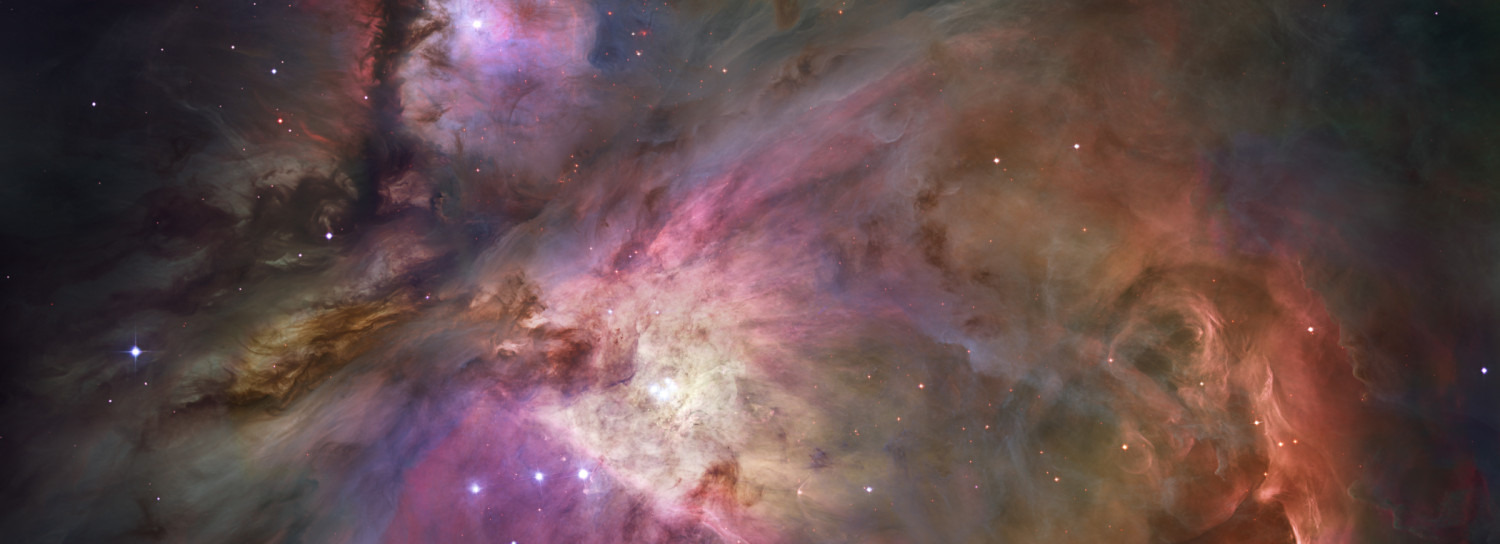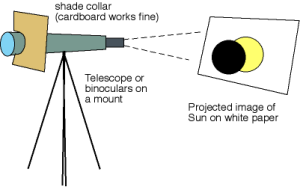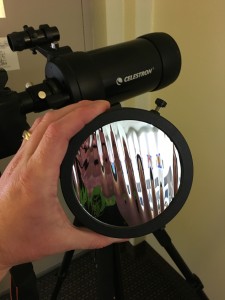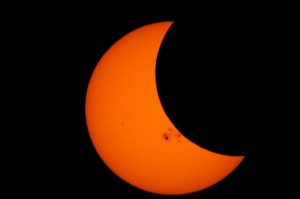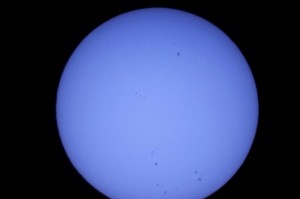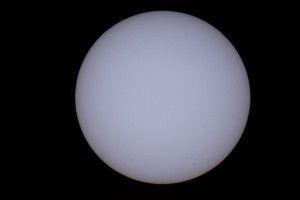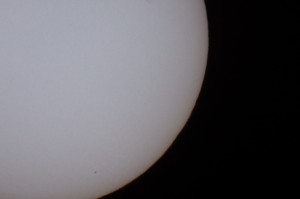As you may be aware, it is not dark out 24 hours a day. At least not on our planet. Unfortunately for you astronomy lovers and romantics, the Sun does rise in the morning and pollute our skies with brilliant, white light that washes out the rest of the universe for a good portion of the day. You can’t even LOOK at the sun safely either, despite it being the closest star to Earth.
All is not lost, however. There are ways for a visual and photography astronomy observer to safely — and that is a key word we will touch on — look at the Sun.
But first that key word. SAFETY. Without a device as previously mentioned, NEVER EVER NEVER NOT EVEN IF YOU ARE OFFERED A POT OF MONEY NEVER LOOK AT THE SUN DIRECTLY THROUGH A TELESCOPE BINOCULARS CAMERA OR EVEN WITH YOU NAKED EYE. Galileo did it, and sketched sun spots, and his initial observations were risky — and he got lucky. His first glances at the Sun were when the Sun was VERY low on the horizon, and filtered through a little more atmosphere. And he very soon figured out the first safe way to observe — the projection technique. This is fairly easy. Point your scope at Sol, which is a fairly easy target to find, place something around the front of it to block a little of the extraneous light, and then hold up a sheet of paper, cardboard, or perhaps something a little fancier to project the image of the Sun onto.
Something like this. Pretty easy to do. Galileo, by the way, did not go blind from looking at the Sun. He eventually developed cataracts and glaucoma at the age of 72. Like I said, he got lucky. You might not be, and you could severely damage your eyesight if you look directly at the Sun.
There are a few more sophisticated methods. A solar filter is a device that can be attached to a camera lens, or over the front opening of a telescope. A good filter is one of the only ways to safely look at the Sun. It is possible to make your own filter, as many companies sell solar film that you can use to craft something up. I prefer to use glass filters when available, however. I can’t show you that right now since I unfortunately left my glass filter behind on this trip (dumb!) but I do have a less expensive film based filter with me.
That’s it. Nothing fancy, just a ring of plastic, a few screws to tighten it down on the front opening of the scope, and the ever so important solar film. One on the front end, you can safely look at our closest star!
Another quick note — ALWAYS inspect your filter before every use. A small pin prick hole in the film, or a scratch of the protective film on the glass, could let a concentrated blast of full strength sunlight directly into your eyeball.
Solar filters do their jobs a little differently when it comes to filtering out the visual spectrum of light from the Sun. The two images where the Sun looks white? Those are from the filter show above. You might not realize it, but the Sun is actually white in color; it is our atmosphere alters the lightwaves into yellow, orange and reddish shades. The atmosphere is another form of filtration that I don’t think I have time to explain tonight. The blueish image with the sunspots is from my solar filter I have for my 6″ CST, a higher quality film filter. The orange from at 2014 partial eclipse? That is from my Seymour Solar (https://www.seymoursolar.com/) glass filter for my C90, the one I dumbly left behind. My reason for liking this isn’t just for the high quality glass, but it show the Sun in the color that most people expect to see it. Like everything else in this hobby, you can spend what you want to. The “cheap” filter I have with was about $25 bucks. My glass filter? Closer to $100. Just keep in mind what those filters will be protecting, your eyeballs, without which you can’t do a whole lot of stellar viewing, of the Sun or anything else.
There are telescopes you can purchase that are designed specifically for solar viewing. Meade’s Coronado line is one of the more famous ones (http://www.meade.com/products/coronado.html). But given the already pricey nature of the hobby, I am content to sticking with filters rather than add another, single use telescope to the storage bay.
Sun spots can make for fun observing, and if you have never seen a solar eclipse, DO SO. The partial a couple of years back was the first I had experienced since owning a telescope, and it was amazing. You may of course have heard that in 2017 the USA will be in for a FULL SOLAR ECLIPSE, with totality being viewing across a wide swath of the country. It will be a once in a lifetime opportunity for many to see such an event, and I have heard that it can be nearly spiritual to witness.
For more regular observing, here is a useful website for all sorts of “space weather”, including sun spot activity. http://www.spaceweather.com/ It was a slow day up there with only two small spots, but I appear to have imaged them both.
Clear skies and REMEMBER TO USE PROTECTION WHEN VIEWING THE SUN!
